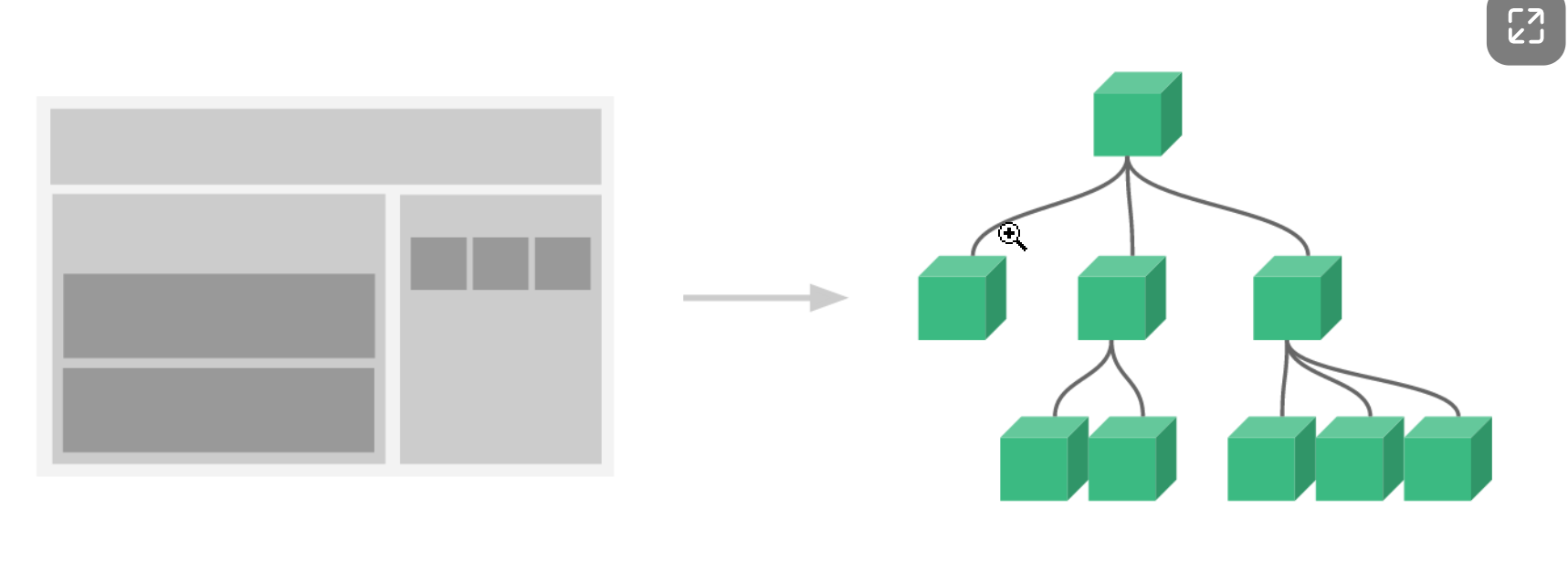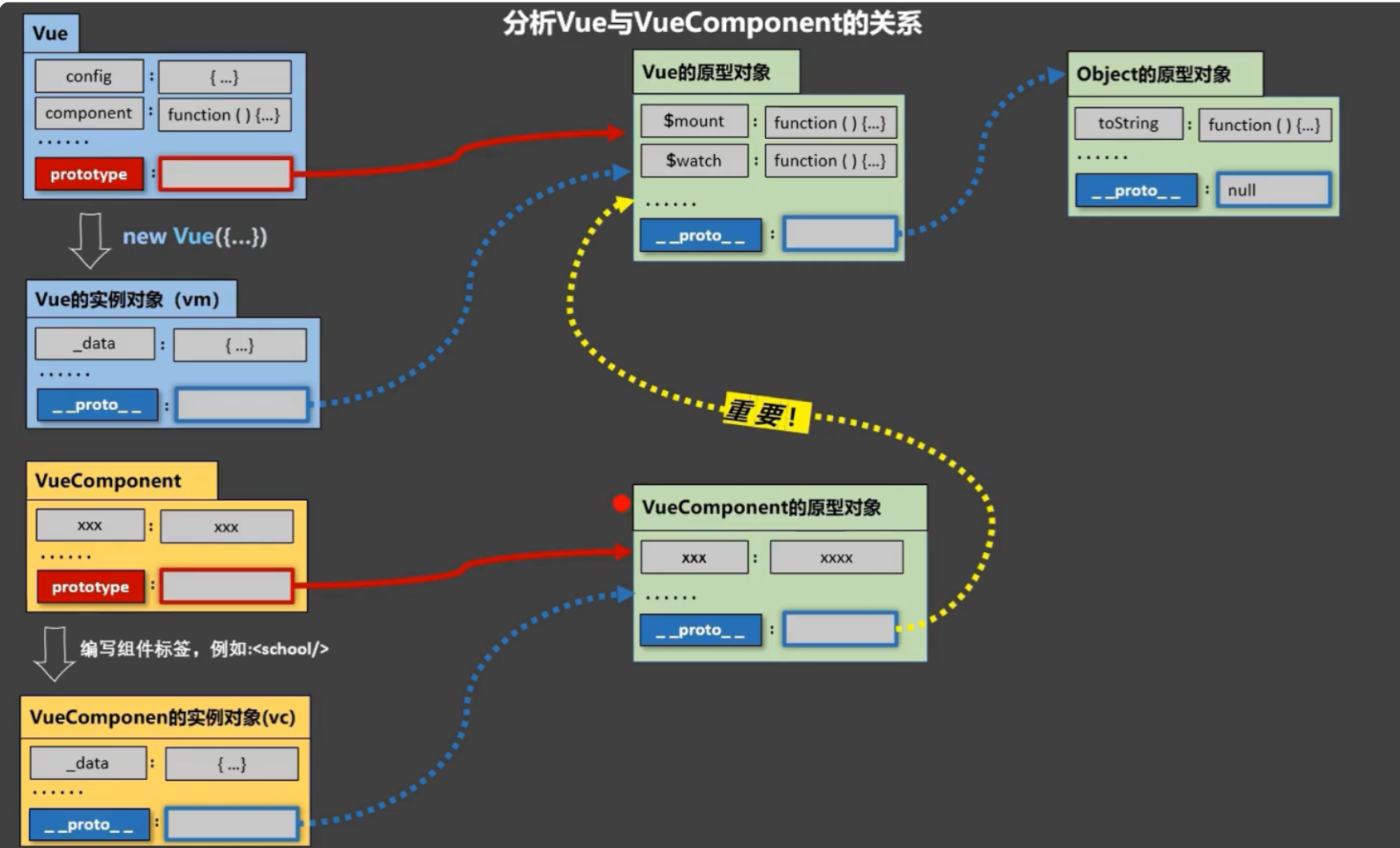Vue组件化编程
哥们是真不行,学到组件了,脑子已经乱糟糟的了,必须记笔记了=。=


组件
a定义:用来实现局部功能的代码和资源的集合(html/css/js/image…)
b为什么:一个界面的功能很复杂
c作用:复用编码,简化项目编码,提高运行效率
模块化
当应用中的 js 都以模块来编写的,那这个应用就是一个模块化的应用
组件化
当应用中的功能都是多组件的方式来编写的,那这个应用就是一个组件化的应用
2.2.1. 基本使用
<div id="root">
<hello></hello>
<hr>
<h1>{{msg}}</h1>
<hr>
<!-- 第三步:编写组件标签 -->
<school></school>
<hr>
<!-- 第三步:编写组件标签 -->
<student></student>
</div>
<div id="root2">
<hello></hello>
</div>
</body>
<script type="text/javascript">
Vue.config.productionTip = false
//第一步:创建school组件
const school = Vue.extend({
template:`
<div class="demo">
<h2>学校名称:{{schoolName}}</h2>
<h2>学校地址:{{address}}</h2>
<button @click="showName">点我提示学校名</button>
</div>
`,
// el:'#root',
//组件定义时,一定不要写el配置项,
//因为最终所有的组件都要被一个vm管理,由vm决定服务于哪个容器。
data(){
return {
schoolName:'尚硅谷',
address:'北京昌平'
}
},
methods: {
showName(){
alert(this.schoolName)
}
},
})
//第一步:创建student组件
const student = Vue.extend({
template:`
<div>
<h2>学生姓名:{{studentName}}</h2>
<h2>学生年龄:{{age}}</h2>
</div>
`,
data(){
return {
studentName:'张三',
age:18
}
}
})
//第一步:创建hello组件
const hello = Vue.extend({
template:`
<div>
<h2>你好啊!{{name}}</h2>
</div>
`,
data(){
return {
name:'Tom'
}
}
})
//第二步:全局注册组件
Vue.component('hello',hello)
//创建vm
new Vue({
el:'#root',
data:{
msg:'你好啊!'
},
//第二步:注册组件(局部注册)
components:{
school,
student
}
})
new Vue({
el:'#root2',
})
</script>
2.2.2. 组件注意事项
关于组件名
●一个单词组成
○第一种写法(首字母小写):school
○第二种写法(首字母大写):School
●多个单词组成
○第一种写法(kebab-case 命名):my-school
○第二种写法(CamelCase 命名):MySchool(需要Vue脚手架支持)
●备注
○组件名尽可能回避HTML中已有的元素名称,例如:h2、H2都不行
○可以使用name配置项指定组件在开发者工具中呈现的名字
关于组件标签
●第一种写法:
●第二种写法:
●备注:不使用脚手架时,
一个简写方式:const school = Vue.extend(options)可简写为const school = options,因为父组件components引入的时候会自动创建
2.2.3. 组件的嵌套

<!DOCTYPE html>
<html>
<head>
<meta charset="UTF-8" />
<title>组件的嵌套</title>
<!-- 引入Vue -->
<script type="text/javascript" src="../js/vue.js"></script>
</head>
<body>
<!-- 准备好一个容器-->
<div id="root">
</div>
</body>
<script type="text/javascript">
Vue.config.productionTip = false //阻止 vue 在启动时生成生产提示。
//定义student组件
const student = Vue.extend({
name:'student',
template:`
<div>
<h2>学生姓名:{{name}}</h2>
<h2>学生年龄:{{age}}</h2>
</div>
`,
data(){
return {
name:'尚硅谷',
age:18
}
}
})
//定义school组件
const school = Vue.extend({
name:'school',
template:`
<div>
<h2>学校名称:{{name}}</h2>
<h2>学校地址:{{address}}</h2>
<student></student>
</div>
`,
data(){
return {
name:'尚硅谷',
address:'北京'
}
},
//注册组件(局部)
components:{
student
}
})
//定义hello组件
const hello = Vue.extend({
template:`<h1>{{msg}}</h1>`,
data(){
return {
msg:'欢迎来到尚硅谷学习!'
}
}
})
//定义app组件
const app = Vue.extend({
template:`
<div>
<hello></hello>
<school></school>
</div>
`,
components:{
school,
hello
}
})
//创建vm
new Vue({
template:'<app></app>',
el:'#root',
//注册组件(局部)
components:{app}
})
</script>
</html>
关于 VueComponent
a.school 组件本质是一个名为VueComponent的构造函数,且不是程序员定义的,而是 Vue.extend() 生成的
b.我们只需要写
c.==每次调用Vue.extend,返回的都是一个全新的VueComponent,即不同组件是不同的对象==
d关于 this 指向
ⅰ组件配置中data函数、methods中的函数、watch中的函数、computed中的函数 它们的 this 均是 VueComponent实例对象
ⅱnew Vue(options)配置中:data函数、methods中的函数、watch中的函数、computed中的函数 它们的 this 均是 Vue实例对象
eVueComponent的实例对象,以后简称vc(组件实例对象)Vue的实例对象,以后简称vm
2.2.5. 一个重要的内置关系

1一个重要的内置关系:VueComponent.prototype.proto === Vue.prototype
prototype:显示原型对象
__proto__:隐式原型对象
2为什么要有这个关系:让组件实例对象vc可以访问到 Vue原型上的属性、方法
整理下,清楚多了+。+,开心~



